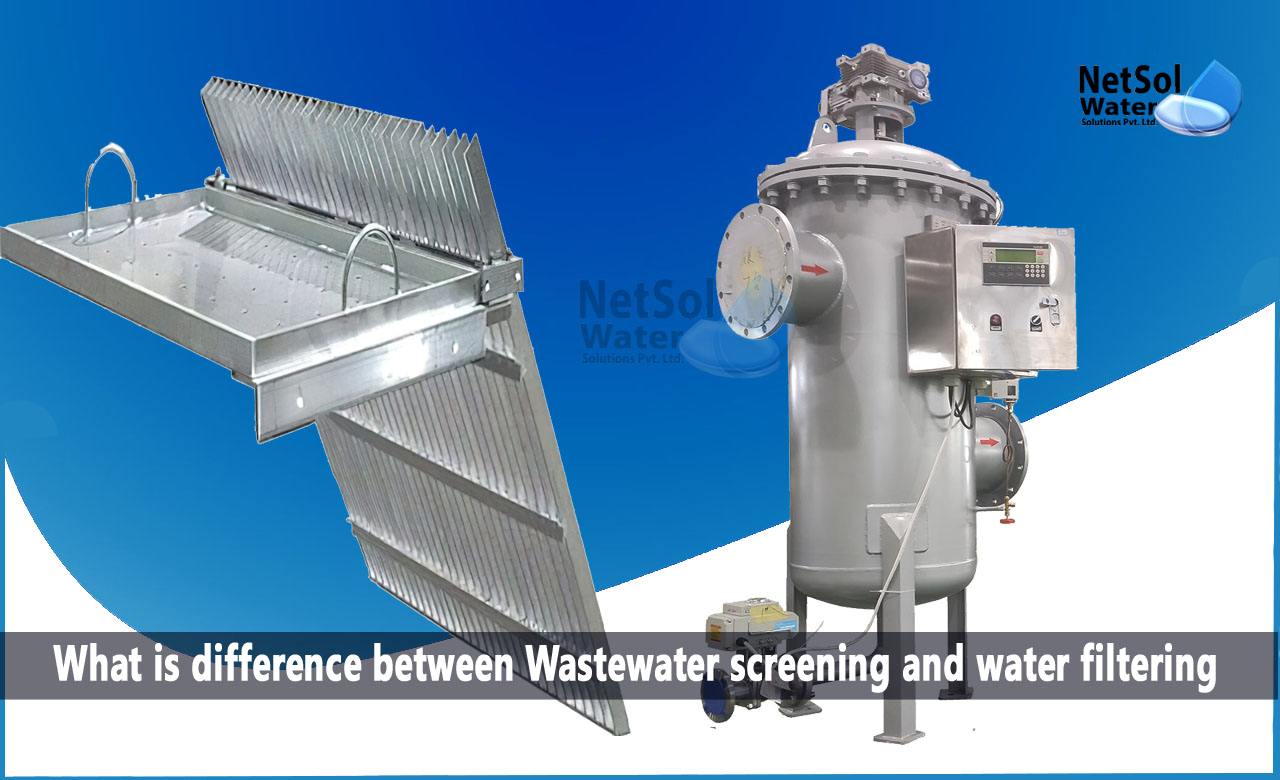Wastewater treatment is a process of removing impurities from wastewater to make it safe for release into the environment. The process involves several steps, including primary treatment, secondary treatment, and tertiary treatment. Two of the most crucial steps in the process are wastewater screening and filtering.
In this blog, we will study the differences between wastewater screening and filtering.
What is wastewater screening?
Wastewater screening is a process of removing large and small solids from wastewater. The process is essential in the wastewater treatment process because it prevents damage to downstream equipment, reduces the potential for blockages in pipes, and protects the environment.
Wastewater screening can be divided into two main categories: coarse screening and fine screening. Coarse screening removes large solids, such as sticks, rocks, and other debris. Fine screening removes smaller solids, such as hair, paper, and plastic.
Wastewater screening equipment uses a variety of methods to remove solids from wastewater. The two most common methods are mechanical screening and manual screening.
Mechanical screening involves the use of equipment such as screens, grit classifiers, and rotary drum screens. These devices are designed to remove large and small solids from wastewater by passing the wastewater through a screen or filter.
Manual screening involves the use of screens that are cleaned manually by an operator. The screens are typically made of wire mesh or perforated metal and are placed over a collection basin. Wastewater flows through the screen, and any solids that are too large to pass through are caught and removed.
What is wastewater filtering?
Wastewater filtering is a process of removing suspended solids and contaminants from wastewater by passing it through a filtering medium. The filtering medium can be sand, gravel, activated carbon, or other materials.
Wastewater filtering can be divided into two main categories: granular media filtration and membrane filtration.
Granular media filtration involves the use of a filter bed made up of a layer of sand or gravel. The wastewater is passed through the filter bed, and the suspended solids and contaminants are removed by adsorption or mechanical filtration.
Membrane filtration involves the use of a membrane to separate the wastewater from the suspended solids and contaminants. The membrane can be made of materials such as polyvinyl chloride, polyamide, or polysulfone.
The two most common types of membrane filtration are microfiltration and ultrafiltration. Microfiltration removes particles larger than 0.1 microns, while ultrafiltration removes particles larger than 0.01 microns.
What is difference between Wastewater screening and water filtering?
Wastewater screening and filtering are two different processes that serve different purposes in the wastewater treatment process. The primary differences between the two are:
1. Purpose:
Wastewater screening is used to remove large and small solids from wastewater, while wastewater filtering is used to remove suspended solids and contaminants.
2. Method:
Wastewater screening uses a screen or filter to remove solids from wastewater, while wastewater filtering uses a filtering medium such as sand, gravel, or a membrane.
3. Size of particles removed:
Wastewater screening removes particles that are too large to pass through the screen or filter, while wastewater filtering removes particles that are smaller than the filtering medium or membrane.
4. Level of treatment:
Wastewater screening is typically used in the primary treatment stage of wastewater treatment, while wastewater filtering is used in the secondary and tertiary treatment stages.
Conclusion:
Wastewater screening and filtering are two different processes that serve different purposes in the wastewater treatment process. Wastewater screening is used to remove large and small solids from wastewater, while wastewater filtering is used to remove suspended solids and contaminants. Wastewater screening uses a screen or filter to remove solids from wastewater, while wastewater filtering uses a filtering medium such as sand, gravel, or a membrane. The size of particles removed, level of treatment, and method used are the primary differences between the two processes. Both processes are essential in wastewater treatment and play a crucial role in protecting the environment and public health.
It's important to note that wastewater treatment is a complex process that involves several steps, including primary treatment, secondary treatment, and tertiary treatment. Each step is designed to remove specific impurities from wastewater and prepare it for safe discharge into the environment. Wastewater screening and filtering are just two of the critical steps in the wastewater treatment process, and their effectiveness is dependent on the type and quality of the equipment used and the expertise of the operators.
Overall, the differences between wastewater screening and filtering may seem subtle, but they are significant. Understanding the differences can help wastewater treatment professionals select the appropriate equipment for their specific needs and ensure that their treatment process is effective and efficient.
Do you need an advice or assistance on selecting the best water and waste water treatment unit? We have solutions for all your problems!
Let us now your problem, our experts will make sure that it goes away.
For an assistance or related query,
Call on +91-965-060-8473
Or write us at enquiry@netsolwater.com



